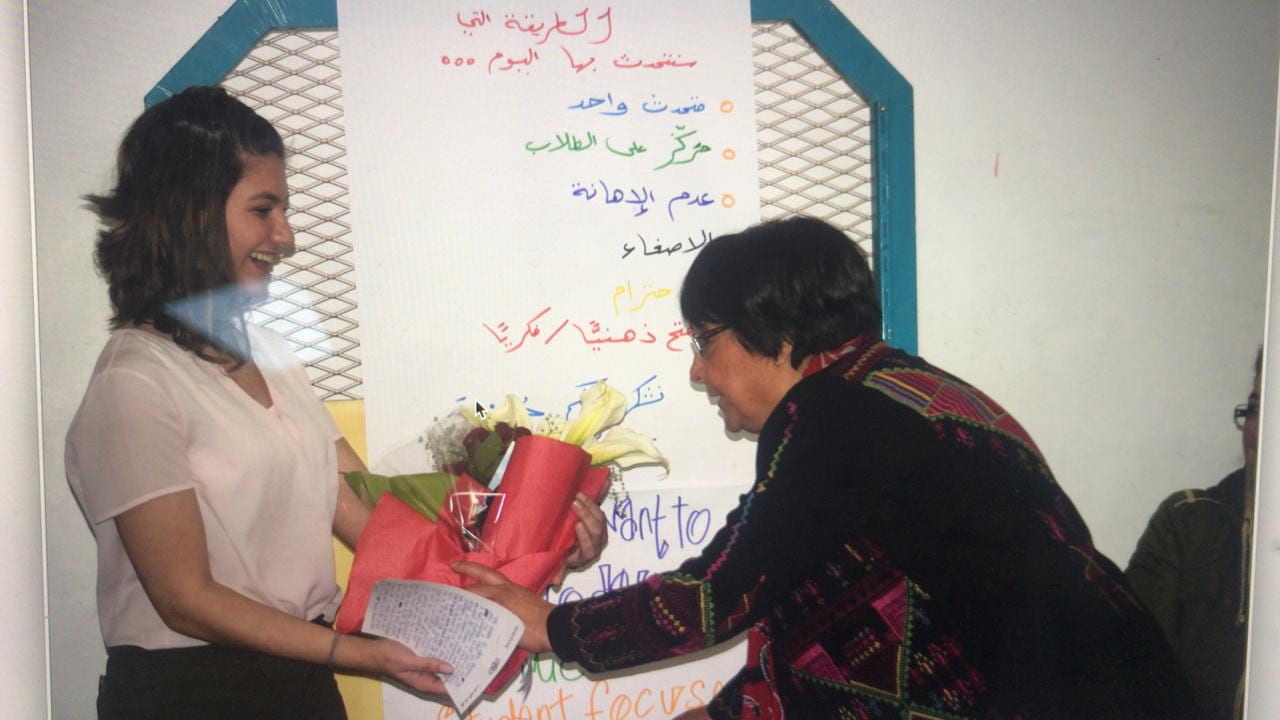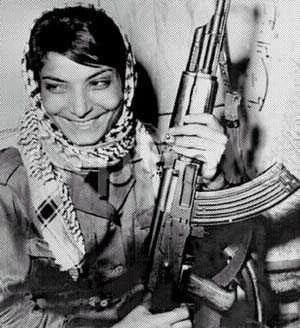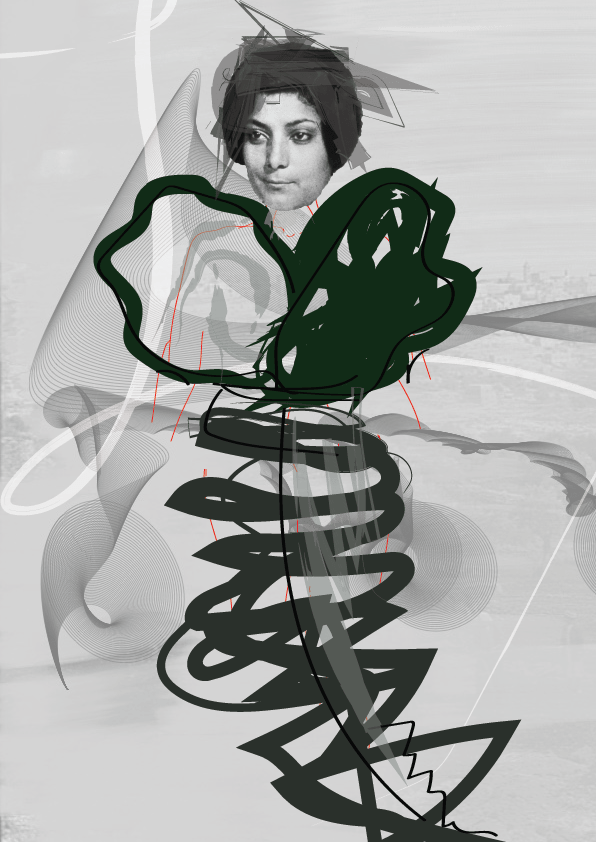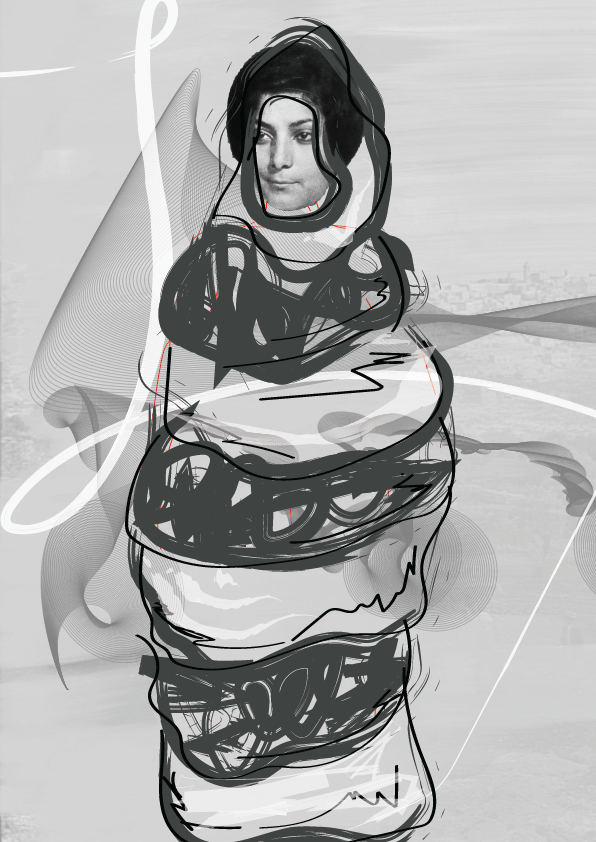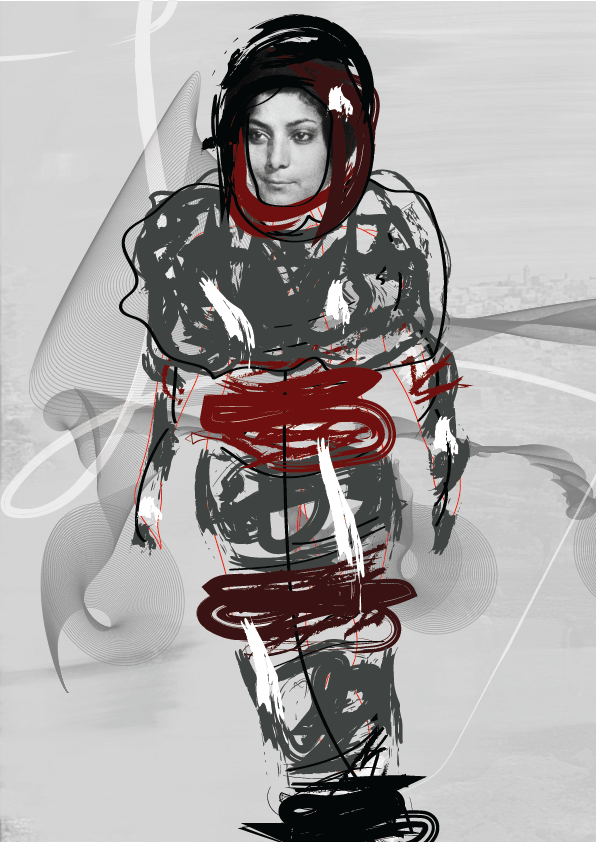Brainstorming and Data Collection:
Person, Leila Khaled: for my person I chose to explore a person that has long inspired me. Leila Khaled is a Palestinian freedom fighter and an icon of Palestinian resistance. Leila was forced to exile her home in Palestine due to the Zionist ethnic cleansing operations that were occurring at the time. Despite that, Palestinians were being ignored by international media, and the Israeli Prime Minister was asserting that “there were no such thing as Palestinians”. To place Palestinians on the international agenda, Khaled performed two peaceful hijackings one in 1969 and one in 1970 that required her to perform reconstructive facial surgery so that she would not be recognizable. She rose to popularity as the first female hijacker and a Palestinian icon. In both hijackings passengers were freed, and Palestinian prisoners were released but most importantly the story of Palestinians was being heard by many worldwide.
Place, Palestine: for my place I chose Palestine. I’m a second generation Palestinian who was born and raised outside of Palestine, and is unable to visit it. My grandparents were refugees and had to walk from Palestine to Jordan, the safest bordering country, in their journey they have lost all of what they had including a couple family members. I find that I long for Palestine, even though I have never been. I find that part of learning more about myself comes from learning more about Palestinian people and the Palestinian land. I truly consider Palestine a home, the fact that I’m able to feel that strong of a connection to a place I’ve never been to reminds of the beauty of Palestine.
Thing, bags: In my culture I’ve always been told that owning a purse as a female marked the stage were you move on from being a child to a ‘women’. I never necessarily believed in that concept, I’ve never seen much value to carrying a purse/hand bag, I felt like it was rather impractical. However, ever since I moved to New York, I can’t go anywhere without carrying a bag. I’m always clutching a bag wherever I go, you can tell a lot about how I am feeling that day depending on what I am carrying, in a way it has helped me understand what I’ve been told actually meant. The concept of identifying someone based on an object of theirs reminds me one of the most popular Leila Khaled images. She is wearing a Keffiyeh (a Palestinian scarf that resembles Palestinian resistance), and clutching a riffle.
Fashion Illustration styles:
- I’ve always liked work with an unfinished element to it, this is what I appreciated about Richard Kilroy’s fashion illustration style.
- I’ve always been interested in surrealism art, the combination of sketches, fabric, and photographs gives Eugenia Alejos Garrido’s work a surreal element that I greatly appreciated.
- As the previous artist, Antonio Lopez utilizes the combination of photographs and drawn elements to create a surreal atmosphere and convey a sense of place.
References:
- https://electronicintifada.net/content/bio-shows-why-leila-khaled-remains-icon-resistance/11324.
- https://www.freedomarchives.org/La_Lucha_Continua/Leila_Khaled.html
- https://www.pinterest.com/pin/166281411211618283/
- https://www.pinterest.com/pin/232498399498773725/
- https://www.pinterest.com/pin/231442868324968031/
Possible Ideas and Sketches:
- Person: for each sketch I attempted to explore the different styles of illustration that I have admired.
- Place: I knew I didn’t want to be too abstract with this because it would be difficult to identify the place, I was working with recognizable elements of Palestine. However, I really enjoyed how a certain digital brush looked when I was tracing those areas of Palestine, and I liked the abstracted result.
- Thing: the cylindrical shape of the bag is inspired by Leila Khaled’s trifle, I attempted to illustrated the bag in the different styles that I was inspired by.
Iterations:
I was told that I misunderstood the requirements for the previous sketches, I was supposed to sketch fashion garments inspired by the person, place, and thing not just visual them. However, from the previous sketches I was able to deduce which style I would most like to explore for the final 4 sketches. I found that for illustrating the face I will use the style of the second sketch in person, for the background the 1st sketch in place, and for the garment the 2nd sketch in thing.
Final Piece:
Person: when I think of Leila, I think of her ability to adapt and transform (ex; plastic surgery to become unrecognizable). I adapted that concept into this garment, I was thinking of the transforming garments that go from short to long (every color is the different length that it can transform into). I also adopted the neckline from the most popular images of Leila, she is pictured wearing a boiler suit in the majority of her photos.
Place: when I think of Palestine, I always think of olive trees. Not only are they a symbol of Palestinian culture, but they have also become a symbol of resistance and a target for the colonizer. For this garment, I adapted the general shape of the olive tree.
Thing: when I think of bags I think of containment, so many things within bags that they sometimes even lose their shape. Therefore, I decided to create a full body garment, that also distorts the general body’s shape to mimic what happens to bags.
All Three: for this illustration I thought of my favorite elements from the previous three illustrations. I used the transforming concept from the first one, the colored parts fold over to make the garment shorter to longer. I liked the sleeves inspired by the tree’s shape from the second illustration, so I included them in this garment. Finally, I found the concept of full body suit interesting, so I made this garment full body.
The collection:
Artist Statement: this collection explores Palestine and the people of Palestine. Specifically, one of Palestine’s main icons of resistance; Leila Khaled. Through references to Palestine and Khaled, the collection exemplifies the beauty of the Palestinian resistance. Through the symbolism of a bag, the collection also exemplifies the constant containment of such resistance in the Palestinian culture.
Crit questions:
- Is there cohesion between the pieces?
- Is there repetition between the pieces?
- Is the abstraction of the garment too much/misleading?

